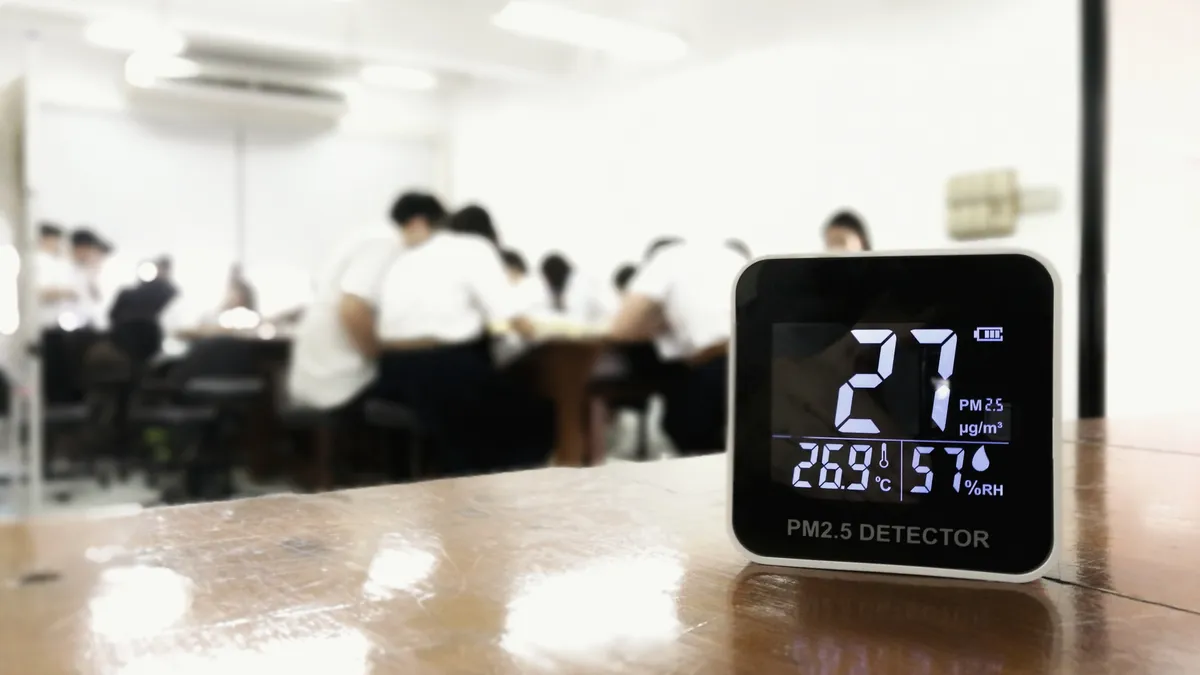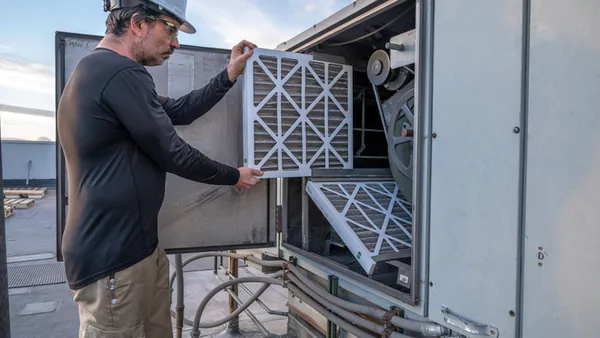Dive Brief:
- The lack of legislated indoor air quality standards exposes indoor environments to pollutants and airborne disease risks, according to an article that international IAQ experts published in Science magazine’s March 28 issue.
- With a growing consensus among experts on the need to revise ventilation rates beyond the minimum “acceptable” targets that have been promoted the past two decades, there is a clear need to implement IAQ standards in public buildings, per a March 28 blog post about the article on the Harvard T.H. Chan School of Public Health’s website. Professor Joseph Allen, director of Harvard’s Healthy Buildings Program, is an author of the article.
- A multipronged approach, including IAQ monitoring, technological innovation and regulatory support, can help building operators make “significant strides toward healthier, safer indoor environments,” the experts say. They also propose that IAQ standards be made mandatory for public spaces, according to the article’s abstract.
Dive Insight:
Indoor air quality has grown in importance to regulators, tenants and building operators since the pandemic, with research showing that improving it can reduce exposure to respiratory pathogens and enhance cognitive function performance, the blog post says. Awareness of the risks associated with poor indoor air quality has driven organizations to update or introduce new indoor air quality standards in the past year.
These include updates to the Centers for Disease Control and Prevention guidance, including a definition of the term “ventilation” and recommendation of at least five air changes per hour, and the release of ASHRAE Standard 241, which sets minimum requirements for outdoor airflow rates and filtration, air cleaning technology and performance testing.
There is a growing need to revise ventilation rates beyond the minimum acceptable targets, the authors say. They recommend a new ventilation rate of 14 liters per second per person, which they say aligns with previous recommendations, including the Lancet COVID-19 Commission’s 2022 report.
“Most countries do not have any legislated indoor air quality (IAQ) performance standards for public spaces that address concentration levels of IA pollutants,” Queensland University of Technology School of Earth and Atmospheric Sciences Professor Lidia Morawska, lead author of the article, stated in a March 29 press release. “To have practical value, IAQ standards must be implementable by designing new buildings that are built, operated and maintained to standard or retrofitted to meet the standards.”
In addition, the article authors say that there is “transformative potential” for monitoring IAQ parameters, such as particulate matter and carbon dioxide, utilizing advancements in lower-cost sensor technology, according to the Harvard blog post. These tools allow operators to “see” what is happening indoors, identify and manage IAQ issues, and make informed decisions that foster long-term well-being and productivity indoors, the post notes.














